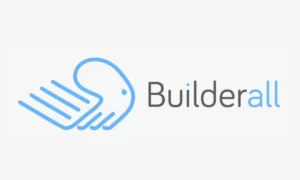In the complex world of design, few have seamlessly transitioned between disciplines as fluidly as Pragya. Starting with a solid foundation in architecture, Pragya embarked on a transformative journey into the realm of user experience (UX) design, where principles of physical space and digital interaction converge. As a Senior UX Designer, the former architect now leads the UX design and research of cutting-edge products in the oil and gas production operations space, harnessing IoT, machine learning, and AI to enhance operational efficiencies and production capabilities.
The Path from Architecture to UX Design
The inception of Pragya’s career was marked by the co-founding of Yugen Space Design, an Architecture and Interior Design LLC firm in India. While she designed for clients from across the globe, her most cherished project was an architectural consultation and design project for a UNESCO MGIEP school where she designed for children with learning disabilities. While trying to scale her business and leading the website design of her company, Pragya found a new passion—User Experience Design. This initial foray into digital design sparked a series of questions about user interaction and digital space utilization, leading to a discovery of UX design principles. Applying these principles not only improved the company’s website but also expanded its business scope to include more UX and web design projects.
The allure of UX was irresistible to Pragya, who saw deep parallels between architectural and UX design. Both fields demand a profound empathy for user needs, extensive research, and meticulous project management—skills that she mastered through years of architectural practice. This realization marked a pivotal moment, turning a burgeoning interest into a full-fledged career transition, propelled by an eagerness to influence more lives through intuitive design.
“The design principles that make a great architect are strikingly similar to those in UX design,” explains Pragya. “Both require understanding the user’s environment, needs, and behaviors to create functional, aesthetically pleasing solutions that genuinely impact people’s lives.”
Innovations in Oil and Gas Production Operations Software Applications
In the high-stakes environment of oil and gas production, Pragya’s impact is profound. Leading the design of a suite of IoT products and a task + alarm management mobile app, she has fundamentally improved the user experience of these data heavy apps that cater to complex workflows.
Gas Lift Optimization:
1. The Gas Lift Optimization product, designed by Pragya, with the help of stakeholders, Product Owner and Development team is a testament to how intuitive UX design can enhance industrial operations. The product’s dashboard presents network connectivity, well lists, production KPIs, network status, and vital charts, all designed to streamline the workflow of Production Engineers. The product has freed up to several hours per engineer each month, significantly boosting operational efficiency across networks handling over a thousand wells.
Methane Emission Detection App:
2. Another pioneering UX Design project led by Pragya focuses on sustainability—a methane emission detection app that leverages AI to analyze data from sensors and cameras at well locations. This app drastically reduces the need for routine site visits, thereby cutting down on emissions from travel and enhancing safety. “It’s about integrating technology with a clear focus on the environment and operational efficiency,” the Senior UX Designer notes. The app displays trends, tables, and snapshots, making critical data readily accessible and actionable.
Task & Alarm Management App:
3. As the lead designer of the Production Operations App, Pragya has revitalized its interface and usability. Understanding the unique challenges faced by Production Techs, especially those working night shifts, Pragya implemented a dark mode to ease the strain on users’ eyes, adhering to WCAG accessibility guidelines. The redesign, driven by direct user feedback and a revamped information architecture, has not only enhanced the app’s aesthetics but also its functionality, aiming to increase the user satisfaction and substantially reducing error rate.
UX Research and Educational Initiatives
Pragya’s approach to UX research is as innovative as it is effective. In an environment where time is a precious commodity, she employs mixed-method research techniques to maximize insights. A typical session might include a 60 to 90-minute usability test combined with a think-aloud protocol, followed by a survey to gauge user satisfaction and a card-sorting exercise to optimize the interface layout. “By consolidating various UX methodologies into a single session, we not only save time but also gather rich, multifaceted user insights,” Pragya explains.
Beyond project-specific research, Pragya is dedicated to elevating the overall UX maturity within the company. This commitment is exemplified by the workshops Pragya leads, covering topics from information architecture to UX strategy and Figma Dev Mode. These sessions serve not only to refine the skills of fellow designers but also to cultivate a broader appreciation of UX principles among non-designers in the organization.
The pinnacle of Pragya’s educational initiatives is the co-authoring of a playbook on UX design and research. This endeavor aims to bridge the gap between designers and other departments, fostering a unified understanding of UX’s role in achieving business goals. “The UX Play book is a crucial tool for us,” remarks a Product Lead colleague. “It helps demystify UX for those unfamiliar with its impact and provides practical insights into integrating UX into our workflows.”
Enhancing Designer-Developer Collaboration
Effective collaboration between designers and developers is crucial for the successful implementation of UX designs, and Pragya has been instrumental in optimizing this process. “Constant communication is key,” she asserts. To facilitate this, she ensures regular interactions and pre-handoff meetings with developers to explain design decisions and discuss any potential issues.
Pragya has also implemented strategies to encourage developers to engage more actively with the design process. This includes inviting them to participate in design reviews and maintaining an open line of communication for any questions post-handoff. “It’s about building trust and understanding between teams. When developers are involved in the design stages, they gain a deeper appreciation of user needs and design intents, which translates to better implementation and fewer revisions,” Pragya elaborates.
These efforts have not only smoothed the handoff process but also cultivated a culture of mutual respect and cooperation between the design and development teams. As a result, projects move forward more efficiently and effectively, aligning closely with both user needs and technical constraints.
Personal Philosophy and Professional Insights
Pragya’s philosophy centers around the proactive integration of UX design in project planning. “UX shouldn’t be an afterthought—it needs to be part of the conversation from the beginning,” Pragya advises. This approach ensures that user needs are not only recognized but prioritized throughout the project lifecycle.
Moreover, Pragya emphasizes the importance of data-driven design decisions. “In a field where everyone speaks the language of data, validating your design with solid quantitative or qualitative metrics is crucial,” Pragya points out. This methodology has not only strengthened the credibility of the design team but also aligned UX goals with business objectives, facilitating smoother project approvals and stakeholder buy-in.
Conclusion
From the drafting tables of architecture to the digital interfaces of UX design, Pragya has traversed a remarkable path that bridges two seemingly disparate worlds with grace and expertise. In doing so, she has not only advanced the practice of UX design within the oil and gas industry but also set a benchmark for how design can fundamentally transform traditional industries. As she continues to innovate and inspire, the impact of her work is sure to resonate for years to come, proving that good design is not just about aesthetics—it’s about making life better, one user experience at a time.



































